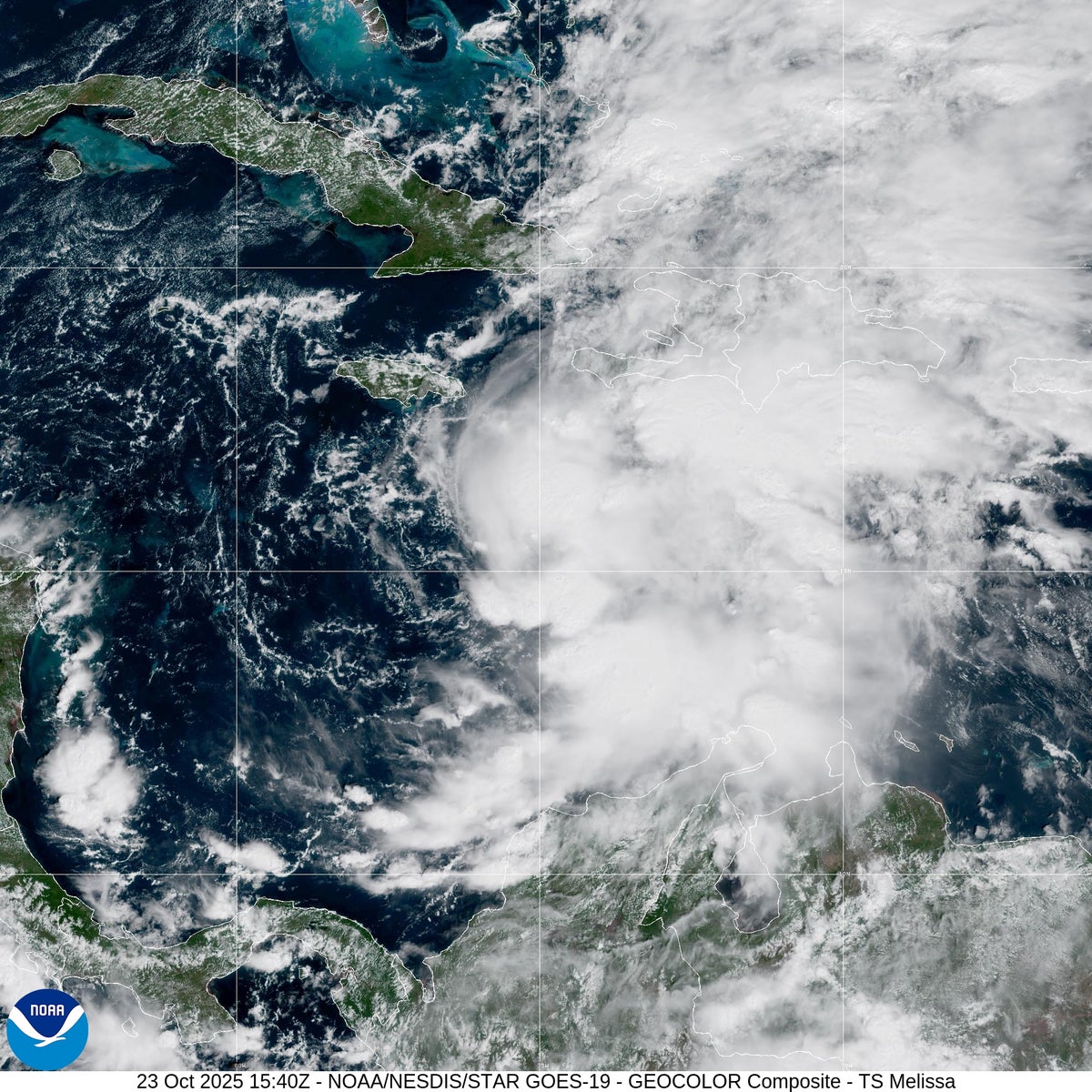On October 23, 2025, Tropical Storm Melissa was making headlines as it slowly churned over the Caribbean Sea, poised to intensify rapidly into a major hurricane. This storm presents a grave threat to Jamaica, parts of Haiti, and other nearby Caribbean islands, primarily due to the enormous amounts of rainfall it is expected to unleash. Meteorologists warn that some areas could receive as much as 20 inches of rain within just a few days—a staggering volume with potentially catastrophic consequences.
Melissa, as of the afternoon of October 24, was classified as a tropical storm with sustained winds of 60 miles per hour, according to the National Oceanic and Atmospheric Administration’s (NOAA) National Hurricane Center (NHC). Despite the ongoing federal government shutdown that had lasted three weeks at that point, the NHC continued its operations, closely monitoring the storm’s progression. Experts forecast that Melissa would become a hurricane within 24 hours and escalate to a major Category 3 hurricane by Sunday. It was even possible that the storm could strengthen further to Category 4 by Monday. The storm’s expected path was to turn northward by Tuesday or Wednesday, potentially crossing over Jamaica or skirting it to the west before nearing Cuba later in the week. Fortunately, the storm was not anticipated to pose a direct threat to the U.S. mainland.
One of the most concerning aspects of Hurricane Melissa is its slow movement. At the time of reporting, the storm’s eye was moving at just two miles per hour—slower than a person’s walking speed. This sluggish pace is significant because it means that affected areas will be subjected to hurricane conditions for an extended period, intensifying the storm’s destructive potential. Brian McNoldy, a hurricane researcher at the University of Miami, emphasized this point by stating that while any hurricane impact is dangerous, a slow-moving storm is far worse due to prolonged exposure to its powerful forces.
While hurricanes are often associated with their fierce winds and storm surges, the tremendous rainfall they bring can be even more perilous. Hurricane Melissa’s heavy rains are expected to saturate the islands, with the National Hurricane Center predicting between 10 to 20 inches of rainfall across parts of southwestern Haiti and eastern Jamaica. Some locations in Haiti might even experience rainfall exceeding 20 inches. Because the storm’s timeline could extend beyond current projections, these totals might increase further.
The immense rainfall from Melissa is particularly alarming given the topography of the region. Islands like Jamaica and Hispaniola—which comprises Haiti and the Dominican Republic—feature mountainous terrain that is highly vulnerable to flash floods and landslides. Water naturally rushes downhill, accumulating in valleys and low-lying areas, which can lead to sudden, devastating floods. The situation is similar to what was witnessed during Hurricane Helene in the previous year when heavy rains triggered severe flooding and landslides in Appalachia. Mountainous landscapes can also enhance rainfall because as moist air masses collide with mountain slopes, they are forced upward, cooling and condensing moisture into even more precipitation. This phenomenon can worsen the flooding threat during storms like Melissa.
In addition to the geographical vulnerabilities, climate change plays a significant role in amplifying the severity of rainfall events associated with storms. Warmer global temperatures increase the atmosphere’s capacity to hold water vapor, leading to more intense and frequent heavy precipitation events. McNoldy explained that this “fingerprint” of climate change means storms generally carry more moisture and produce heavier rainfall than in the past. This trend raises concerns that hurricanes like Melissa could become increasingly destructive in terms of flooding.
Experts warn that once rainfall amounts exceed even half a foot, the volume becomes challenging for any area to manage. When precipitation reaches 12 inches or more, the situation becomes critical regardless of the quality of local infrastructure. The potential for flash flooding in steep, mountainous terrain is especially dangerous because water is funneled rapidly into confined areas, overwhelming drainage systems and causing widespread damage.
Historically, tropical storms and hurricanes have shown that rainfall can be the deadliest aspect of these natural disasters. For example, Hurricane Harvey in 2017 set a record for the most rainfall from a single storm in the continental United States, dumping more than 48 inches of rain near Houston, Texas. Similarly, Hurricane Helene caused up to two feet of rain in the Appalachian region last year, compounding flooding problems following previous heavy rains. These precedents highlight the danger posed by Melissa’s anticipated deluge.
The combination of slow movement,

